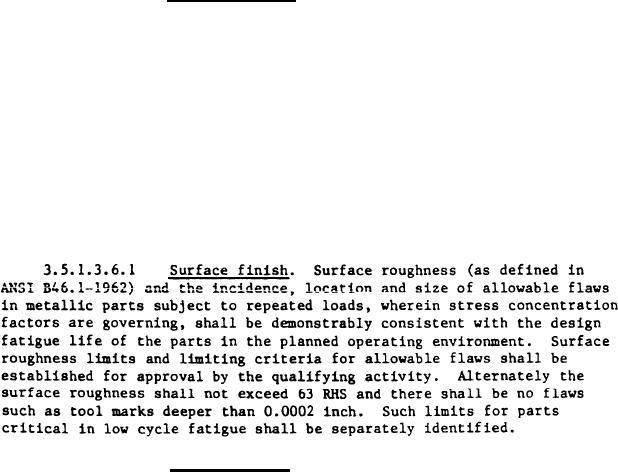 |
|||
|
|
|||
| ||||||||||
|
|  MIL-V-81995(AS)
alloy, such stresses My be as high at 75% of the minimum yield strength
in any grain flow direction. These limits for stresses represent the
algebraic sum of all the continuous tension and compression surface
stresses resulting from any source such as quenching, forming and
assembly. The use of cadmium in contact with or plated on titanium
shall not be permitted.
3.5.1.3.6
Fatigue factors. To prevent premature failures
caused by repeated loads, the design and method of manufacture, including
consideration of the damaging effect of decarburization and certain
metallic coatings, of all critical parts and the techniques by which
they are assembled and installed shall be such that sustained or residual
tensile stresses and stress concentrations are minimized. Practices
such as cold straightening, cold forming, and the assembly of mismatched
surfaces, which result in sustained or residual surface tensile stresses
shall be avoided. In cases where such practices cannot be avoided,
corrective practices such as stress relief heat treatment, optimum gain
flow orientation, peening (shot or rotary flat) or similar surface
working shall be used to minimize premature fatigue failure. In no case
shall parts of nonuniform section be cold formed unless the contractor
can demonstrate with test results that required fatigue resistance is
obtained.
Heat treatment. Heat treatment of aluminum alloys
3.5.1.3.7
shall be in accordance with the material specification and lfIL-H-6088.
Steels shall be heat treated in accordance with the material specification
and KIL-H-6875. Precautions shall be taken to minimize warpage during
heat treatment. Steel parts which require straightening after hardening
to 200,000 psi or below may be cold straightened provided a stress
relieving heat treatment is subsequently applied.
-
Straightening of parts hardened to tensile strengths
above 200,000 psi shall b~&complished at a temperature within the
range from the tempeting temperature to SOoF (lO~C) below tempering
temperature.
9
|
|
Privacy Statement - Press Release - Copyright Information. - Contact Us |